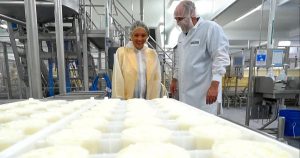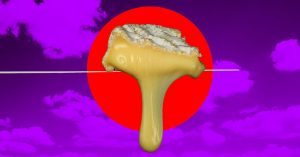

Senior Technical Consultant
Alpha Solutions, Food and Ingredients
mlo@alpha-solutions.it
Mozzarella cheese is manufactured at two levels of moisture content, which have different intended uses. Low-moisture mozzarella cheese (45-52% w/w) is mainly used as an ingredient in pizza making and other food preparations, while high-moisture mozzarella (52-60% w/w), which is generally consumed as a fresh table cheese.
The physical properties of Mozzarella cheese are affected by cheese age, calcium content, fat, moisture, pH, salt content, and starter cultures used. Moreover, the microstructure of Mozzarella cheese plays an important role in determining the amount of water that is retained in the cheese and is available for protein hydration.
Thus, a balance among all the components mentioned above is functional to the structure of the final product.
One key aspect to retain water in the protein matrix is fat content. In low fat mozzarella cheese, the fewer fat globules allow casein fibers to compact during curd formation. During stretching, fat globules and water organize between casein fibers, creating columns that prevent the coalescence of protein fibers. With less fat globules, the protein matrix becomes more compact and, thus, with less space for water: this makes water retention in the final product more difficult. Low fat Mozzarella will result in a cheese with reduced melting and stretching properties and a tough and rubbery texture.
In low fat Mozzarella cheese, different procedures have been explored aiming at retaining more water (high pasteurization, temperatures, milk pre-acidification, larger cutting knives, lower cook temperatures). However, the use of so-called exopolysaccharide producing cultures could help achieve this goal since these bacteria produce a coat of hydrophilic polymers that improve moisture retaining in the final product.
From a technological point of view, if the moisture content of the curd affects the stretching temperature, it does not affect the stretching behaviour of the curd, which depends only on the degree of casein demineralization. However, moisture influences stretchability and breaking resistance of the fibers.
Controlling moisture content in Mozzarella cheese is economically relevant: for this reason, high effort should be put in minimizing high variability among production processes, also with the aim of a satisfying shelf-life of the product. During storage, the water organised in columns among protein fibers is absorbed as a consequence of increased hydration of the proteins, which become less aggregated. This leads to an increase in the meltability. To tackle this effect, adding salt to the cheese and reducing cheese calcium content could help.
Moisture content of fresh Mozzarella cheese will affect its shelf-life in the preserving liquid. Knowing moisture content will be fundamental since it will affect the balance between the preserving liquid and Mozzarella during storage. This value will also help us to prepare the most effective preserving liquid.
Alpha Solutions has got experience in Mozzarella production processes, in particular concerning the development, implementation and assessment of the best procedures for the improvement of the final product. by detecting and understanding the needs of the client and any issue concerning the process, the Alpha Solutions Team will help you in achieving the target results for your Mozzarella cheese making process.
References
Ah, J., & Tagalpallewar, G. P. (2017). Functional properties of Mozzarella cheese for its end use application. Journal of food science and technology, 54(12), 3766–3778. DOI:
https://doi.org/10.1007/s13197-017-2886-z
David B. Perry, 1999. The effect of exopolysaccharide-producing cultures on the moisture retention and functional properties of low fat mozzarella cheese. Master of Science, Utah State University.
Germano Mucchetti, Erasmo Neviani, 2006. Microbiologia e tecnologia lattiero-casearia. Qualità e sicurezza. Tecniche nuove
Michele Faccia, Giuseppe Gambacorta, Antonella Pasqualone, Carmine Summo, Francesco Caponio, 2021. Quality Characteristics and Consumer Acceptance of High-Moisture Mozzarella Obtained from Heat-Treated Goat Milk. Foods 2021, 10, 833. DOI: https://doi.org/10.3390/foods10040833






















